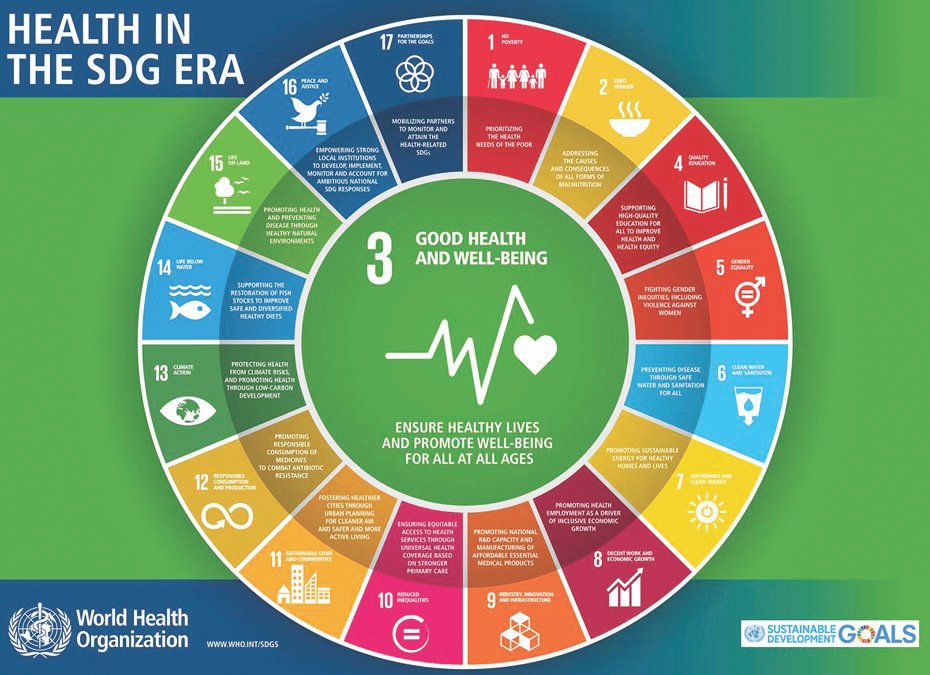
Two targets relating to HIV/AIDS in MDG 6 are to have halted and begun to reverse the spread by 2015 and to ensure access to treatment among all those in need by 2010. In 2015 there were 2.1 million (1.8-2.4 million) new HIV infection worldwide adding up to a total of 36.7 million (34-39.8 million) people living with HIV/AIDA and half of them about 17 million were under antiretroviral treatment. From 2000 to 2016 new HIV declined 66% for children under 15 and 45% among adolescent aged 15-19. In SDG, everyone with HIV needs to access to treatment. In 2019 it was estimated that globally 38 million HIV affected people are there and in only in 2019, 1.7 million were new patients. In comparison to 2010, it is reduced by 23% but 2019 figure is 3 times higher than 2020 projection. Now transmission is very slow, 67% have access to Antiretroviral therapy, 15%, i.e. 5.8 million in Asia and Pacific and 67% from Africa. In Bangladesh we had 0.04 HIV patient per 1000 population in the base year 2016 with a target to reduce gradually to 0.01 in 2030. In MDG period and prior to that our all-out efforts to prevent HIV/AIDS were very effective and meaningful and that enabled us to keep HIV patient very low.
For Malaria in 2015 to 2017 period globally almost no significant progress. In 2017 it was estimated that 219 million cases were there with 435 thousand deaths. If you take the case of tuberculosis, it is a disease of poverty, economic distress, vulnerability, marginalization and stigma. In 2019 it was estimated that 10.4 million new TB cases were identified corresponding to 142 cases per hundred thousand population and death is 1.2 million. These are among HIV negative and again 208 thousand death among HIV positive. In neglected topical diseases like Kala-zar (viceral leishmaniasis), lymphatic filaria, dengue, these are prominent. In kala-azar, in 2006, 9,379 deaths were recorded.
We have very good record in fighting Malaria with a target to reach 3 per thousand population by 2020 but we could reach 0.92 by 2019. Tuberculosis we addressed very efficiently with a target to reach 200 by 2025 and 150 by 2030; in the meantime, in 2018 we reached 161 per 100000.
In Bangladesh, in 2019 dengue took about 164 lives, which was 176 in 2018, reduced from 650 in 2014. Kala-azar, lymphatic filariasis and dengue among all these 3 are prominent water borne diseases in Bangladesh. Mosquito, flies these are the carriers and the cause are lack of basic clean water, sanitation and hygiene. Bangladesh is expected to validate lymphatic filariasis eradication in 2020. Other neglected tropical diseases globally Ebola, zika, Buruli ulcer, Chagas diseases and cysticercosis. In neglected tropical diseases, reducing premature death the performance of Bangladesh health sector needs to take further attention.
If we consider non-communicable diseases, that is cancer, diabetic, heart diseases etc. globally 36 million deaths from non-communicable diseases and among those, 29 million that is three fourth in the low and middle-income countries. In South Asia, non-communicable diseases account for around half of annual mortality. In Bangladesh 59% of total death is for non-communicable disease, that is 886 thousand death a year. In 2015, 7.1 million case of diabetes, 3.7 million may be undiagnosed and the same year, 129 thousand deaths were out of diabetes. In non-communicable diseases which are commonly heart disease, cancer, diabetes we fixed the target but we need to look to the collection of data more seriously.
Another cause of death globally is suicide. Amongst all the death globally 1.4% are from suicide. It is estimated 800,000 people commit suicide globally every year, this is twice the number of homicides. And this is the leading cause of death among the youth, one person in every 40 seconds. Global suicide is half for woman than man. Greenland with the highest rate of suicide; this silent death now has a lower tendency. In Bangladesh, we have 2.06% of global suicide with a tendency of suicide among woman opposite to the global picture, it is higher than man. It is estimated that there are 11,000 suicides in Bangladesh yearly, which makes 32 death daily. Honorable prime minister instructed to setup an institute to study suicide. With a local study it was found, in some of the areas, specially Satkhira and Jhenaidaha, tendency of suicide is higher. To reduce suicide, social mobilization is very much essential. But unfortunately, in our country we only find a small non-government organization named “Kan Payte Roi” is the only active platform. During Covid, at the beginning, death from non-communicable diseases increased due to lack of health facilities, but in the mean time in our country, we have the protocol of dealing both corona or non-corona patients simultaneously. But globally tendency of suicide is higher during covid both in man and woman due to loneliness, fear of death, sometimes unbearable mental condition. In another study in 2017 it showed that suicide in Bangladesh is higher in males than females. And male to female ratio 1.09 but commonly it is understood that suicide rate among the woman is higher because of their safety, more emotion, poverty and other social stigma. In terms of suicide in Bangladesh we had base data of 7.68 per lakh death in 2015 with almost no progress since then. SDG Target 3.5 relating to drug and alcohol in 2018 about 38,000 people were treated with a target to treat for substance abuse 45,000 in 2025 and 55,000 by 2030. In our country, use of alcohol is very minimum and we reformulated the target in 2020 which is at a lower scale.
Road accident is another cause of death; globally 1.35 million people die in road traffic crashes in 2016; one death in 25 seconds. A study shows only 28 countries of the globe has enough law for speed, drunk, reckless driving, helmets, seat-belts. One third of deaths in low- and middle-income country are among pedestrians and cyclists. Road accident is inversely proportionate with income; higher the income lower the death rate. In 2013, Bangladesh faced 13.6 death per 100,000 persons and 1,020.6 death per 100,000 vehicles. One of the Nordic countries Norway had only 2 death per 100,000 persons and 3 deaths per 100,000 vehicles in 2013. In Bangladesh record shows in 2018 we had 4,439 deathtoll but in 2019, 788 death increased and it came to 5,227. One of the most important areas in achieving SDG, reducing the death in road accidents. Here our target was per lac 2 person by 2020 but in 2018 we could reach 1.64 per lakh.
Health issues is mostly related with sexual re-production and family planning activities. The method of family planning used by women, our target was to reach 75% by 2020 and remarkable performance is 62.1% by 2019. In terms of human resource in each of the union parishads, we have our health and family planning service provider who used to visit the houses and they are available in the community clinic, which is one primary health infrastructure covered 6,000 people. This unique arrangement of community clinic along with the health and family planning service providers, distributing 30 types of essential medicine free with expert support from the upazila made our health system much stronger than that of other countries of similar economy.
Md. Abul Kalam Azad, Former Principal Secretary and Principal SDG Coordinator



